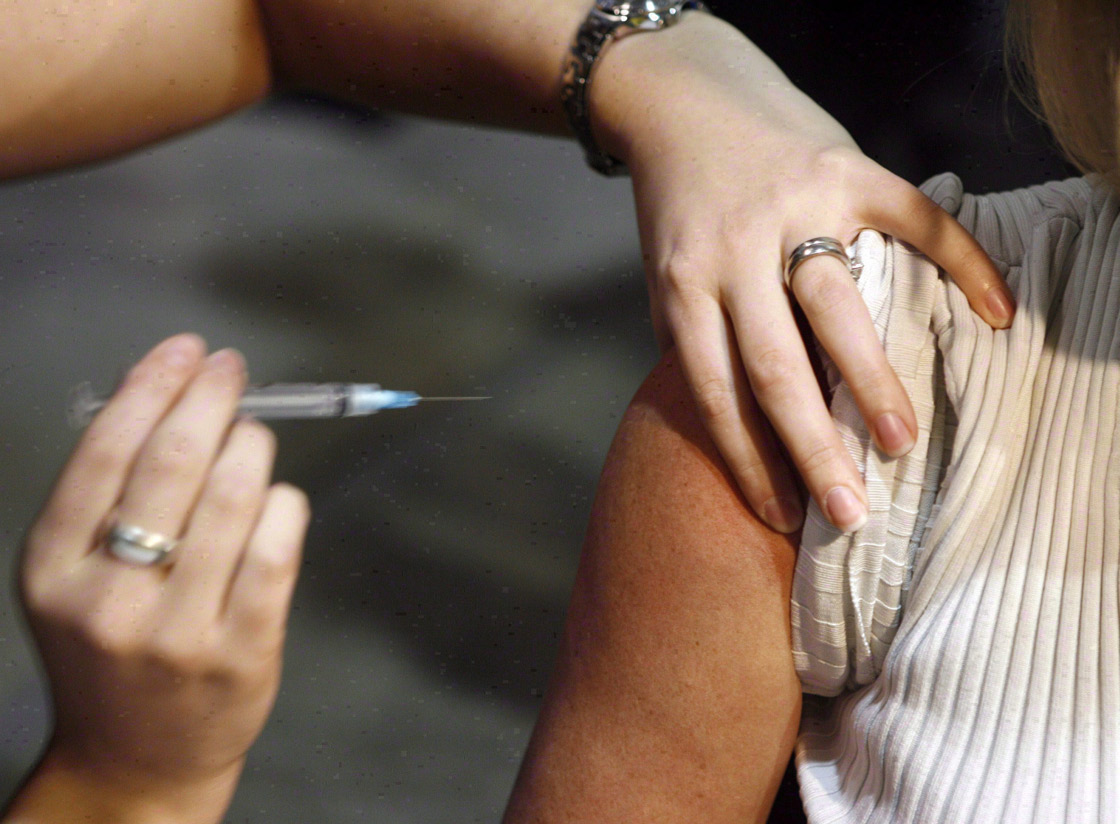TORONTO – Faced with evidence that drug-resistant gonorrhea is spreading in the province, Ontario is recommending a different treatment approach for the sexually transmitted infection.

New treatment guidelines recommend that doctors no longer use the established therapy, a last oral antibiotic that could be used solo against the infection. Instead, Public Health Ontario is recommending that people who test positive for gonorrhea should be treated with a combination of an injectable antibiotic plus a second antibiotic, which comes in pill form.
Dr. Vanessa Allen of the provincial public health agency co-chaired the committee that developed the new treatment guidelines. She said using a combination of antibiotics may help to slow gonorrhea’s relentless march through the antibiotics in medicine’s armamentarium.
“It’s really too bad that we can no longer use the pill (alone),” Allen said in an interview.
“If we could, obviously we would want to offer that. … (But) we know it’s not as effective … and it may in fact be promoting resistance in these organisms in the community.”
In adopting the combination therapy — injectable ceftriaxone and oral azithromycin — Ontario is falling into line with the U.S. Centers for Disease Control, Public Health England and the European Centre for Disease Control, all of which recommend this regimen as the first-line treatment for gonorrhea. Those recommendations were made in the face of the spread of a resistant clone of gonorrhea which has been making its way around the globe.
But it makes Ontario the first Canadian jurisdiction to go this route. Currently the first-line therapy for gonorrhea in the rest of the country remains a single dose of the oral drug cefixime.
- Shoppers faces proposed class action over claims company is ‘abusive’ to pharmacists
- Most Canadian youth visit dentists, but lack of insurance a barrier
- ‘Bacterial vampirism’: Deadly pathogens attracted to human blood, study finds
- Landmark smoking ban that would phase out sales passes U.K. parliament
The Public Health Agency of Canada is in the process of revising the national treatment guidelines for gonorrhea and is expected to release its new recommendations sometime this year. In late 2012 the agency published interim recommendations that included urging doctors to double the dose of antibiotics used — either injected ceftriaxone or oral cefixime — to reduce the risk that the treatment would fail to cure the infection.
The interim guidance also suggested that because recent drug-resistant cases have mainly been reported in men who have sex with men, the injected drug should be used in this population.
Allen said the Ontario guidance marks the first time the province has come up with its own treatment recommendations for clinicians treating gonorrhea.
The committee that worked on the guidelines has been openly discussing the proposed new advice with caregivers for awhile, seeking input from doctors and clinics. They were concerned there would be pushback, that people who treat gonorrhea cases would argue against dropping the easy-to-use cefixime regimen.
But Allen said people now appear to understand why the change needs to be made.
The decision to go to combination therapy anchored by injectable ceftriaxone was based on a study Allen and colleagues published earlier this year in the Journal of the American Medical Association. They reported that cefixime failed to cure about seven per cent of gonorrhea cases seen at a Toronto clinic. By the end of 2012 the drug-resistant clone had been found in 18 of 36 health units in Ontario, Allen noted.
The facility in the study, the Hassle Free Clinic, is unusual in that it asks people who test positive for the infection to come back for testing to see if the treatment actually cured their gonorrhea.
Jane Greer is a director of the clinic, which is located in Toronto’s urban core. She said Hassle Free has been using the new treatment regime since last summer because of the evidence cefixime can no longer cure all gonorrhea infections.
She said the combination therapy is a bit more of a burden on care providers, but it makes sense.
“If we know that this is the more effective treatment, then there’s no sense treating something if it may be inadequate. I mean, what’s the point?”
Allen said there have also been concerns that people may not seek care if they know they are going to be given an injection rather than just a pill. But Greer said that hasn’t been the experience at the Hassle Free Clinic.
“Our experience is very much that if somebody has something, they want to be properly treated. End of discussion,” Greer said.
But the way things play out in an inner city clinic that focuses solely on the treatment of sexually transmitted diseases may not reflect the way things will play out in the offices of family doctors around the province.
Allen said some doctors may only see a couple of cases of gonorrhea a year. Ensuring they have easy access to the injectable ceftriaxone may be a challenge, she said, noting the provincial ministry of health is working on that issue.



Comments